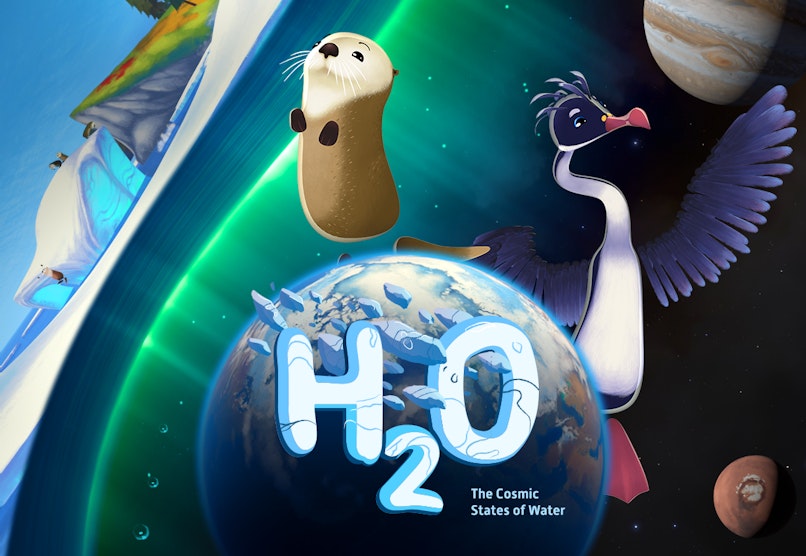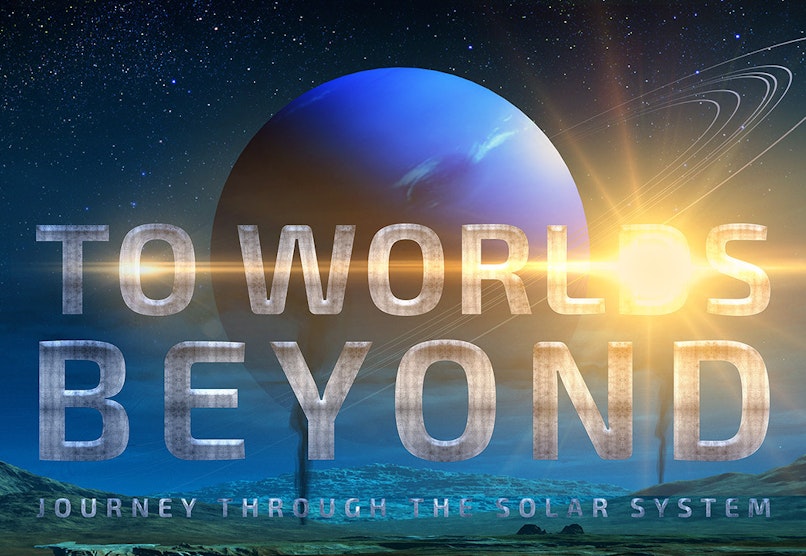The shows below are no longer included in the regular programme, but can be shown on request (e.g. for groups).
Asteroid ★✩✩
In this film, you will go on an epic journey to discover how
asteroids present both danger and opportunity. The danger lies in
the possibility of a catastrophic collision with Earth, the opportunity
is the fascinating idea that asteroids could be an intermediate step to
explore other worlds and traverse the solar system. The challenges are
enormous, but such an extreme mission could ultimately lead to us
protecting our planet and inhabiting other planets.
Join us as we explore how astronauts can reach an asteroid and how humanity can benefit from this adventure.
Starlight ★✩✩
Stars have captured humanity's imagination for centuries. For thousands of years their mysteries have aroused the curiosity of all cultures and civilizations.
A
great deal of information can be derived from weak starlight. By
unraveling this light we can find out what substances the star is made
of. Us humans are made of these same ingredients. In fact, all
substances on Earth, including those in our own bodies, were first
formed in the interior of a star. We'll find out how a star gets its
energy. This is done by nuclear fusion, but this source of energy is
also finite. A lot of stars end their life in a spectacular way because
of this.
Fragile Planet ★✩✩
In this show, we look at some unique places on Earth with the eye of an astronaut. We then travel to the Moon and Mars. Even further away, we look for habitats where extraterrestrial life might occur. So far, however, our Earth is the only known safe haven for life. It is therefore of great importance to take care of our fragile Earth.
Perfect Little Planet ★✩✩
The children's show "Perfect Little Planet" tells the story of a family of space aliens, searching for the ideal vacation destination. Together with their space robot, they traverse the universe and visit different planets and moons.
It soon turns out that finding a suitable planet is not easy. For a pleasant vacation it is sometimes too hot, often too cold and some planets you can't even land on at all. Finally, a blue planet looks promising, but is it safe for our aliens?
Undiscovered Worlds ★★✩
In our solar system, there are 8 planets orbiting the Sun. Since the end of the last century, astronomers have also found planets around other stars in our Milky Way Galaxy. These are called exoplanets. This is a very hot topic in current astronomical research. After all, it appeals enormously to the imagination, if only because the question of possible extraterrestrial life soon arises. The show "Undiscovered Worlds" is about the intriguing new research area of exoplanets.
The Sun ★★✩
Our central star has been providing energy to Earth since its creation more than four billion years ago. It thus determines the activity in the atmosphere and is important for all life on Earth. The passage of the Sun's fiery disk in the sky - from day to day, from month to month - was a way of keeping track of time for countless civilizations in the past.
Our Sun is a "yellow dwarf star," but don't let this term fool you: every second our Sun consumes 600 million tons of hydrogen and it contains 500 times more mass than all the planets combined. Experience the unique images of the fierce solar surface and discover the secrets of the most important star in our lives.
Black Holes ★★✩
In "Black Holes" we take you to a place where time stands still, where the normal world order no longer exists, where the unimaginable becomes reality: the fascinating and extreme world of black holes. How does a black hole form? How can we find black holes? Would we survive if we fell into one? These and many more questions about the most bizarre objects in the universe are addressed in this planetarium show. We follow the story of black holes since they were thought up at the end of the 18th century, to the present day. Black holes are no longer the domain of 'science fiction': at Cozmix's planetarium, we take you on a fascinating journey into space and time!
Chasing The Ghost Particle ★★★
Deep beneath the ice at the heart of Antarctica one can find IceCube, the largest and strangest detector in the world. IceCube tries to catch neutrinos, mysterious particles coming from the most extreme places in the universe. These ghostly and elusive particles can teach us more about the most spectacular events in the universe, such as exploding stars and supermassive black holes.
Fractal Explorations ★★✩
A fractal is a geometric figure that is self-similar. That is, one can divide a fractal into pieces that are similar to the original. Often fractals can be generated by repeated application of a particular operation. A lot of objects in nature have fractal properties: from mountains to coastlines, from trees to clouds, from broccoli to snow crystals. A production of Adams State University's Zacheis Planetarium, this show explains what fractals are, how they can be constructed, and where they occur in nature.
Escher's Universe ★✩✩
This full dome film screening highlights the life and work of the multifaceted Maurits Cornelis Escher. Was he an artist, an astronomer, a mathematician, a traveler?
Under the planetarium dome, we witness how Escher handled mathematics, astronomy, optics, crystallography and geometry to artistically interpret complex concepts from cosmology.














